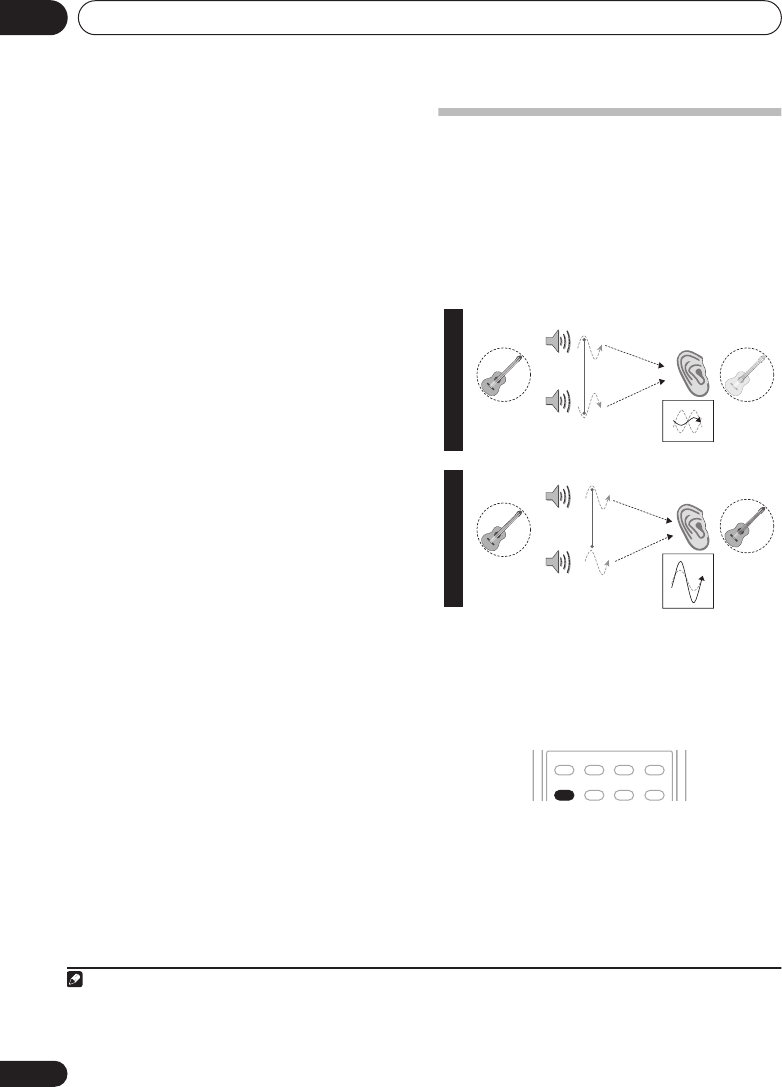
5 minute guide02
10
En
You can also choose to view the settings by
selecting individual parameters from the
Analyzed Data Check
screen:
•
Speaker Setting
– The size and number of
speakers you’ve connected (see page 42
for more on this)
•
Speaker Distance
– The distance of your
speakers from the listening position (see
page 45 for more on this)
•
Channel Level
– The overall balance of
your speaker system (see page 44 for more
on this)
•
Acoustic Cal EQ
– Adjustments to the
frequency balance of your speaker system
based on the acoustic characteristics of
your room (see page 40 for more on this)
Press
RETURN
after you have finished
checking each screen. When you’re finished,
select
SKIP
to go back to the System Setup
menu.
Other problems when using the Auto
MCACC Setup
If the room environment is not optimal for the
Auto MCACC Setup (too much background
noise, echo off the walls, obstacles blocking
the speakers from the microphone) the final
settings may be incorrect. Check for household
appliances (air conditioner, fridge, fan, etc.),
that may be affecting the environment and
switch them off if necessary. If there are any
instructions showing in the front panel display,
please follow them.
• Some older TVs may interfere with the
operation of the microphone. If this seems
to be happening, switch off the TV when
doing the Auto MCACC Setup.
Better sound using Phase
Control
This receiver’s Phase Control feature uses
phase correction measures to make sure your
sound source arrives at the listening position
in phase, preventing unwanted distortion and/
or coloring of the sound (see illustration
below).
Phase Control technology provides coherent
sound reproduction through the use of phase
matching
1
for an optimal sound image at your
listening position. The default setting is on and
we recommend leaving Phase Control
switched on for all sound sources.
• Press PHASE (PHASE CONTROL) to switch
on phase correction.
Note
1 Phase matching is a very important factor in achieving proper sound reproduction. If two waveforms are ‘in phase’, they crest
and trough together, resulting in increased amplitude, clarity and presence of the sound signal. If a crest of a wave meets a
trough (as shown in the upper section of the diagram above) then the sound will be ‘out of phase’ and an unreliable sound
image will be produced.
?
Sound
source
Sound
source
Listening
position
Listening
position
Front speaker
Subwoofer
Front speaker
Subwoofer
P
H
A
S
E
C
O
N
T
R
O
L
O
F
F
P
H
A
S
E
C
O
N
T
R
O
L
O
N
AUTO/ DIRECT
PHASE
ADV SURR
SOUND
RETRIEVER
STEREO/
A.L.C.
ACOUSTIC
EQ
STANDARD
DIALOG
VSX_918_818_KU.book 10 ページ 2008年5月15日 木曜日 午後6時46分


















